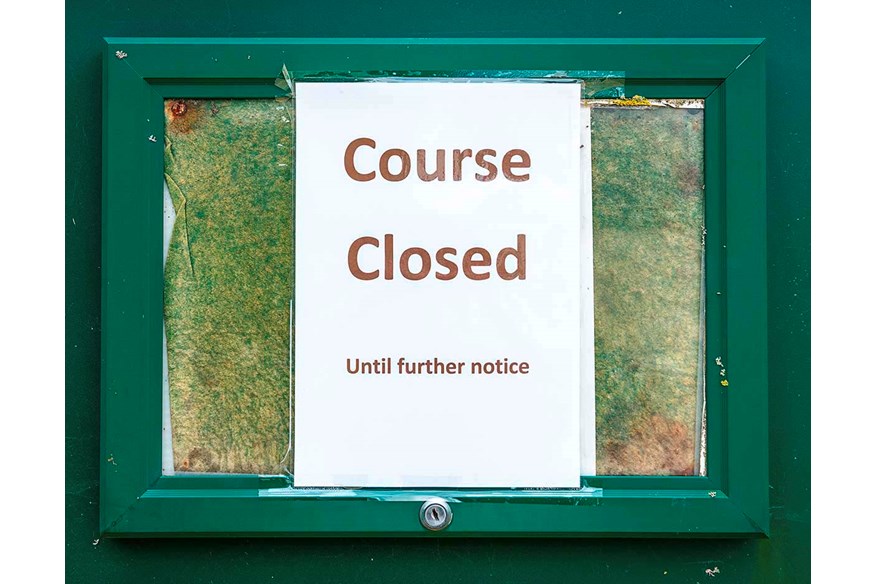“Golf has to do more to make itself accessible – not let public courses close”
Last updated:
Iona Stephen believes her life would be very different were it not for a public golf course in Edinburgh – and wants potential golfers to have an easy and affordable route into the game.
Accessibility is, by definition, the practice of making environments (and other things) useable for as many people as possible. In golf, this ultimately relates to everyone being welcome to join in and play the game.
When people ask how old I was when I first started playing golf, they’re often surprised when I say 19. Why was it so late? I played what was available to me in school and golf wasn’t on offer. Luckily, this is set to change with my Sky colleague Nick Dougherty trying to get golf into every school across the UK through the Unleash Your Drive In Schools programme.
More broadly speaking though, is golf an accessible sport in the UK? One widely discussed barrier to golf accessibility in the UK is the cost associated with playing the sport. Membership fees for private clubs can be prohibitively expensive, often running into thousands of pounds annually. Additionally, green fees for non-members at these clubs can be steep, further restricting access for casual players.
While some clubs offer more affordable membership options for juniors, students, and seniors, cost remains a significant deterrent for many prospective golfers.
To address this issue, efforts have been made to promote public and municipal golf courses, which typically offer more affordable rates and often some very charming golf. These courses are open to all, with pay-and-play options allowing individuals to enjoy the game without committing to long-term memberships.
My first golf membership was at Carrickvale, a small public golf course in Edinburgh which offered me an affordable route into the game. At first, I would pay and play and in doing so I found a community that eventually encouraged me to join as a member. It cost me less than £100 for the year and boy did I get my money’s worth. I remember bashing balls into the practice net for hours on end, long days on the golf course come rain or shine, and evenings feeling the temperature drop as I honed my technique on the putting green in front of the clubhouse. To this day, my club championship win at Carrickvale remains one of my proudest achievements and I often drop in when I’m passing through Edinburgh for a ginger beer.

Recently, there has been uproar in the golfing community around municipal courses closing all across the UK. Councils are facing serious budget shortfalls and are looking to make cuts. Several municipal golf courses are under threat as a result.
In the case of Hollandbush in Lanarkshire, they have managed to push the closure back for at least a year and I was happy to get behind and support their campaign, having had first-hand experience of how a municipal course can positively impact people’s lives.
Initiatives aimed at increasing golf accessibility have gained momentum across the UK. National governing bodies such as England Golf, Scottish Golf and The R&A have launched programs to encourage participation among underrepresented groups, including women, minorities and individuals with disabilities. These initiatives focus on breaking down barriers, promoting inclusivity and fostering a welcoming environment within the golfing community. I believe that social platforms such as YouTube and TikTok have also had a positive impact through their ability to influence and engage a wider audience.
But what hope do we have of broad inclusivity if the game is too expensive for many to get going and the access in the first place is restricted? Of course, golf has a lot to consider, both within the amateur and professional sides, and it’s been a turbulent time of late for the professionals in particular.
With the boost in participation that has been recorded in the amateur game across the UK and around the world post-Covid, we have to work out now how to keep these new golf prospects interested and sustain the momentum.
A clear welcome sign that shouts ‘Start here’ is essential, and when they cross the entrance hall of golf, we don’t want them to run straight back out when they learn of the joining fee.

Last year, standing two feet from the Ryder Cup as we waited for it to be presented to Luke Donald and his winning team in Rome, I looked around at the thousands of people in the stands. I heard my producer confirm that millions were tuning in and briefly recalled my late nights on the putting green at Carrickvale, which opened its doors to me. Would I be where I am today, as a broadcaster in golf, had I not had that initial route in? Absolutely not.
Participation in the game of golf continues to increase, but it is critical that we keep municipal courses open to ensure everyone has the same opportunity.
Looking for a cheap round of golf? We’ve ranked the best golf courses you can play for less than £35!

